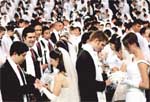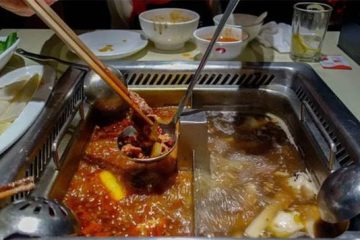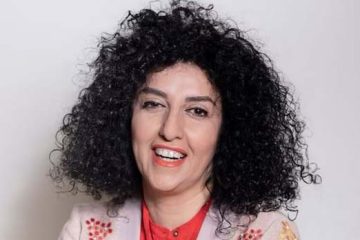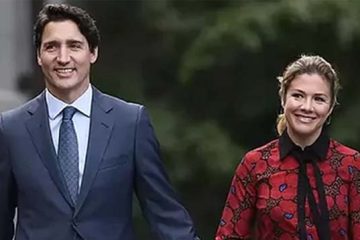Women from poorer Asian countries flood South Korea to find a husband
By Bryan Kay for Christian Science Monitor
 Seoul: To put it simply, says Renalyn Mulato, the daughter of a Filipina immigrant married to a South Korean man here, the key to happiness in her multicultural home is love and understanding.
Seoul: To put it simply, says Renalyn Mulato, the daughter of a Filipina immigrant married to a South Korean man here, the key to happiness in her multicultural home is love and understanding.
That may seem like a painfully obvious prerequisite for most marriages, but for many immigrants in South Korea, it doesn’t always work that way.
South Korea has been grappling with shifting demographics that have left many middle-aged men — particularly in the countryside — cut adrift amid a potential-wife deficit in a country that prizes the rosy picture of marriage.
As young — and now assertive — Korean women flock from their hometowns for careers in the big cities, the men left behind are increasingly looking overseas for brides. That has meant an influx from poorer Asian nations such as Vietnam, the Philippines, Cambodia, and Mongolia. Government figures show the number of Koreans marrying foreign spouses increased from 4,710 in 1990 to 33,300 in 2009. And numbers are expected to continue rising.
This influx of foreigners has sped up multiculturalism in Korea. But many of those marriages don’t turn out well, as shown by a few recent incidents of violence.
Last month, a Korean man stabbed his Vietnamese wife to death, reportedly as her baby lay sleeping next to her. Last summer, another South Korean man fatally knifed his newlywed Vietnamese bride just days after she arrived in the country.
Lack of oversight
Part of the problem that has led to these fatalities, say experts, is a lack of oversight on agencies who locate foreign brides for Korean men.
The result, say critics, are hundreds of unhappy marriages between middle-aged Korean men and young foreign women who are motivated by the desire to escape poverty — a situation exacerbated by huge cultural and language barriers and the Korean preference for homogeneity.
“Many illegal marriage agencies try to get the job done without checking background information such as age, educational background, job, wealth, and marriage status, etc. — which often comes with bad intentions by the applicants,” says Hong Min-ji, who leads the migrant workers and transnational marriage services team at Seoul Global Centre. “This leads to mistrust between couples and family break-ups.”
She highlights an example from her current caseload in which an immigrant Vietnamese woman came to the centre for help. “She got married to her husband through a marriage agency in 2003. After she came to Korea, she found out that not only her husband had mental problems but was also violent,” explains Hong. On top of that, she says, her mother-in-law never acknowledged her as a daughter-in-law.
“During that time, she had a baby. But her marriage didn’t get any better. Her husband did not have any regular income to raise the baby. What’s worse, she got beaten by her husband continually. Her mother-in-law and sister-in-law harassed her with verbal violence. Finally, she left the home and came to us.”
More than 100,000 women among South Korea’s 1.2-million foreign population are estimated to be foreign brides. Vietnamese and Filipina women account for 19.5 and 6.6 per cent respectively, according to Ministry of Health data. The largest chunk — 30.4 per cent — are ethnic Koreans from China.
Fear
Yet, a recent survey of 73,000 multicultural families found that 50 per cent reported that they were “satisfied” with their lives. Hong of the Seoul Global Centre argues that many do not report problems out of fear.
Parliament has recognised a need to take action to encourage more acceptance of multicultural families and help binational marriages succeed. “It is actually a matter of give-and-take,” said Kim Hye-seong, a South Korean lawmaker, in a recent interview. “A society may ask its multicultural citizens to blend in only after it first offers its tolerance to them.”
While some say government action lacks grip, stiffened marriage visa rules came into effect in March. Korean husbands seeking to bring foreign brides from seven countries — including the Philippines, Vietnam, and Cambodia — will now be required to take mandatory courses to prepare them for international unions before being permitted to bring their foreign wives into the country.
Still, critics see the lack of a coordinated approach in tackling the issue. “Many government departments support multicultural families and migrant workers,” says Hong.
“Yet, it does not have a centralised centre.”
She also points to difficulties faced by biracial children, pointing to an incident in which a teacher called a foreign student by saying, “Hey! Multicultural kid.”
Success story
The burgeoning multicultural family led by Mulato’s stepfather, Jang Jin-cheol, and her mother, Leny Velasco, may be an example of how Korea can overcome its cultural biases.
Like many other immigrant women, Velasco came to Korea from the Philippines seeking a better life. But unlike many of the situations in Korea, Jang and Velasco met in Hong Kong through friends, later marrying in Korea.
At first, his family showed some resistance. “But, of course, he fought for me,” says Velasco.
Courtesy of Christian Science Monitor Image courtesy: AP


















